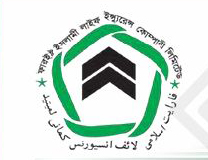| Grameen Bank Bhaban Mirpur - 2, Dhaka -1216 Bangladesh |
| Saturday | 9:00 AM-5:00 PM |
| Sunday | 9:00 AM-5:00 PM |
| Monday | 9:00 AM-5:00 PM |
| Tuesday | 9:00 AM-5:00 PM |
| Wednesday | 9:00 AM-5:00 PM |
| Thursday | 9:00 AM-5:00 PM |
| Friday | Closed |
Introduction
Grameen Bank (GB) has reversed conventional banking practice by removing the need for collateral and created a banking system based on mutual trust, accountability, participation and creativity. GB provides credit to the poorest of the poor in rural Bangladesh, without any collateral. At GB, credit is a cost effective weapon to fight poverty and it serves as a catalyst in the over all development of socio-economic conditions of the poor who have been kept outside the banking orbit on the ground that they are poor and hence not bankable. Professor Muhammad Yunus, the founder of "Grameen Bank" and its Managing Director, reasoned that if financial resources can be made available to the poor people on terms and conditions that are appropriate and reasonable, "these millions of small people with their millions of small pursuits can add up to create the biggest development wonder."
As of October, 2011, it has 8.349 million borrowers, 97 percent of whom are women. With 2,565 branches, GB provides services in 81,379 villages, covering more than 97 percent of the total villages in Bangladesh.
Grameen Bank's positive impact on its poor and formerly poor borrowers has been documented in many independent studies carried out by external agencies including the World Bank, the International Food Research Policy Institute (IFPRI) and the Bangladesh Institute of Development Studies (BIDS).
A Short History of Grameen Bank
The origin of Grameen Bank can be traced back to 1976 when Professor Muhammad Yunus, Head of the Rural Economics Program at the University of Chittagong, launched an action research project to examine the possibility of designing a credit delivery system to provide banking services targeted at the rural poor. The Grameen Bank Project (Grameen means "rural" or "village" in Bangla language) came into operation with the following objectives:
extend banking facilities to poor men and women;
eliminate the exploitation of the poor by money lenders;
create opportunities for self-employment for the vast multitude of unemployed people in rural Bangladesh;
bring the disadvantaged, mostly the women from the poorest households, within the fold of an organizational format which they can understand and manage by themselves; and
reverse the age-old vicious circle of "low income, low saving & low investment", into virtuous circle of "low income, injection of credit, investment, more income, more savings, more investment, more income".
The action research demonstrated its strength in Jobra (a village adjacent to Chittagong University) and some of the neighboring villages during 1976-1979. With the sponsorship of the central bank of the country and support of the nationalized commercial banks, the project was extended to Tangail district (a district north of Dhaka, the capital city of Bangladesh) in 1979. With the success in Tangail, the project was extended to several other districts in the country. In October 1983, the Grameen Bank Project was transformed into an independent bank by government legislation. Today Grameen Bank is owned by the rural poor whom it serves. Borrowers of the Bank own 90% of its shares, while the remaining 10% is owned by the government.

1 4410

0 5154

0 4154

0 5678

0 4887

0 5177

0 5345

0 4622

3 9108

0 4490
0 5665

0 3962

0 3832

0 3724

0 3510